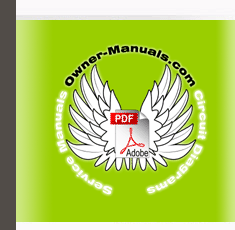|
|
|
Categories
|
|
Information
|
|
Featured Product
|
|
|
 |
|
|
There are currently no product reviews.
 ;
perfect! you just sent to me the copy in Italian witout even my specification!!!! so you are really smart cooperative and efficient. To my opinion the best place all over to get a manual of electronics!!!!
 ;
Well Well Well!!!! Good manual perfect for my hobby!!! As Before you have done a very well done work!!!! Thank you
 ;
Super nice! Good to have a manual in digital format.
 ;
Great job supplying the manual.
Many of these products weerepretty obscure, so it was great that you had
the manual for it!
 ;
Great manual, would not have been able to operate my machine without it!!
James Dawson August 18, 2012
6gb33033.fm Page 6 Thursday, June 10, 2004 2:34 PM
HOW TO USE THE LOW TEMPERATURE COMPARTMENT
If installed, the star low temperature compartment may be used to store frozen products for the time indicated on the packaging. When purchasing deep-frozen foods, check the following: � That the packaging is intact, since the food may have deteriorated. If the package bulges or is marked by damp patches, the product has not been correctly stored and may have partially thawed. � Purchase deep-frozen foods last and use insulated bags for transportation. � Place items in the low temperature compartment as soon as you get home. � Consume partially thawed food within 24 hrs. � Avoid temperature variations as much as possible. Observe the �best before� date on the packaging. � Observe the instructions for preserving deepfrozen foods written on the packaging. How to make ice-cubes � Fill the ice-tray 3/4 full of water and place it in the bottom of the low temperature compartment. If the ice-tray sticks to the bottom, do not use pointed or sharp instruments to detach it.
HOW TO DEFROST AND CLEAN THE LOW TEMPERATURE COMPARTMENT
To maximise performance, defrost the low temperature compartment at least twice a year, or when the layer of ice on the walls reaches 3 mm thickness. Defrost the compartment when the contents are low. 1. Open the door and take out all food items, wrapping them in newspaper and placing them together in a cool place or in an insulated bag. 2. Unplug the appliance from the mains. 3. Leave the door open to allow the frost/ice on the compartment walls to melt. 4. Remove the defrost water with a sponge. 5. Clean with a sponge soaked in a solution of lukewarm water and neutral detergent. Do not use abrasive substances. 6. Rinse and dry thoroughly. Note: to avoid causing irreparable damage, do not use pointed or sharp metal instruments to scrape off ice and do not artificially heat the low temperature compartment. 6
|
|
 |
> |
|
|
Parse Time: 0.192 - Number of Queries: 100 - Query Time: 0.038
